March 2025
Authors Jason Cavadini and Eileen Kladivko
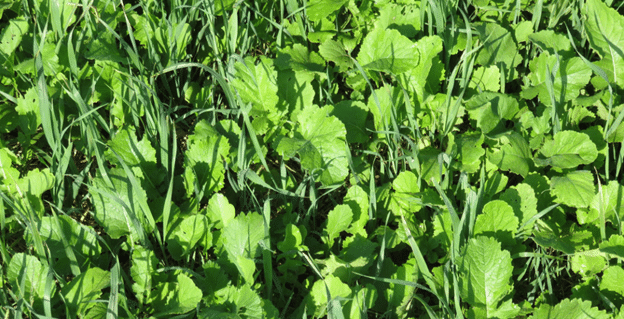
Midwest Cover Crops Council (MCCC-136)
University of Nebraska Extension (G2351)
This publication is intended to provide a starting point for farmers who are new to growing cover crops. With experience, farmers may fine-tune the use of cover crops for their systems.
This publication provides an introductory approach to integrating cover crops following corn silage and before corn or soybeans. These cover crops can have many benefits, such as erosion control, weed suppression, improved soil health, and quality forage production.

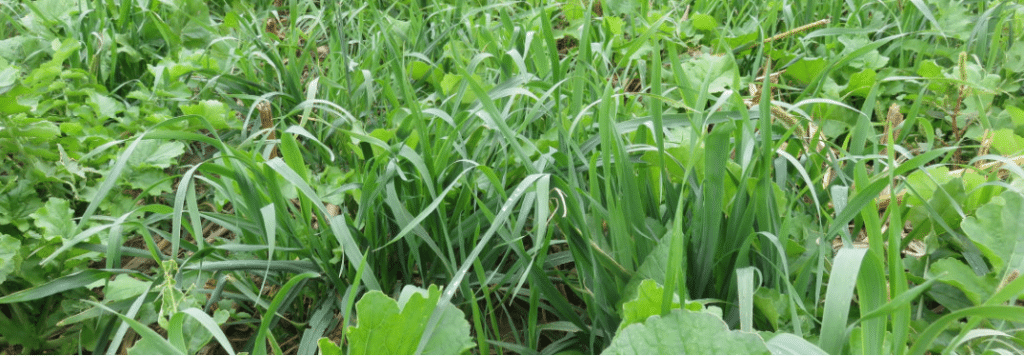
Cover Crop Selector Tool —available from the Midwest Cover Crops Council, https://www.midwestcovercrops.org
Post Corn, Going to Soybean: Use Cereal Rye (Nebraska Cover Crop Recipe series, MCCC-107)
Post Corn Silage, Going to Corn: Use Cereal Rye (Iowa Cover Crop Recipe series, MCCC-121)
Post Corn Silage, Going to Soybean: Use Cereal Rye (Iowa Cover Crop Recipe series, MCCC-122)
Managing Residual Herbicides with Cover Crops (Institute of Agriculture and Natural Resources, Univ. of Nebraska)
How Herbicide Labels Restrict Using Cover Crops as Forage (Institute of Agriculture and Natural Resources, Univ. of Nebraska)
Corn and Soybean Herbicide Options for Planting Cover Crops for Forage in Fall (Institute of Agriculture and Natural Resources, Univ. of Nebraska)
Residual Herbicides and Fall Cover Crop Establishment (Purdue Extension Weed Science publication)
Terminating Cover Crops: Successful Cover Crop Termination with Herbicides (Purdue Extension publication WS-50-W)
Gary Lesoing and Katja Koehler-Cole, University of Nebraska-Lincoln (Note: This publication was adapted with consent from MCCC under a joint project to produce customized introductory guidance about cover crops for all member states/provinces.)
Caro Córdova, Nathan Mueller, and Jennifer Rees, University of Nebraska-Lincoln; Eileen Kladivko, Purdue University; Anna Morrow, Midwest Cover Crops Council
The Midwest Cover Crops Council (www.midwestcovercrops.org) aims to facilitate widespread adoption of cover crops throughout the Midwest by providing educational/outreach resources and programs, conducting new research, and communicating about cover crops to the public.
Funding for this project was provided by McKnight Foundation.
December 2022
The U.S. Department of Agriculture (USDA) prohibits discrimination in all its programs and activities on the basis of race, color, national origin, age, disability, and where applicable, sex, marital status, familial status, parental status, religion, sexual orientation, genetic information, political beliefs, reprisal, or because all or a part of an individual’s income is derived from any public assistance program. (Not all prohibited bases apply to all programs.) Persons with disabilities who require alternative means for communication of program information (Braille, large print, audiotape, etc.) should contact USDA’s TARGET Center at (202) 720-2600 (voice and TDD). To file a complaint of discrimination write to USDA, Director, Office of Civil Rights, 1400 Independence Avenue, S.W., Washington, D.C. 20250-9410 or call (800) 795-3272 (voice) or (202) 720-6382 (TDD). USDA is an equal opportunity provider and employer. ©2022 by MCCC. All rights reserved.
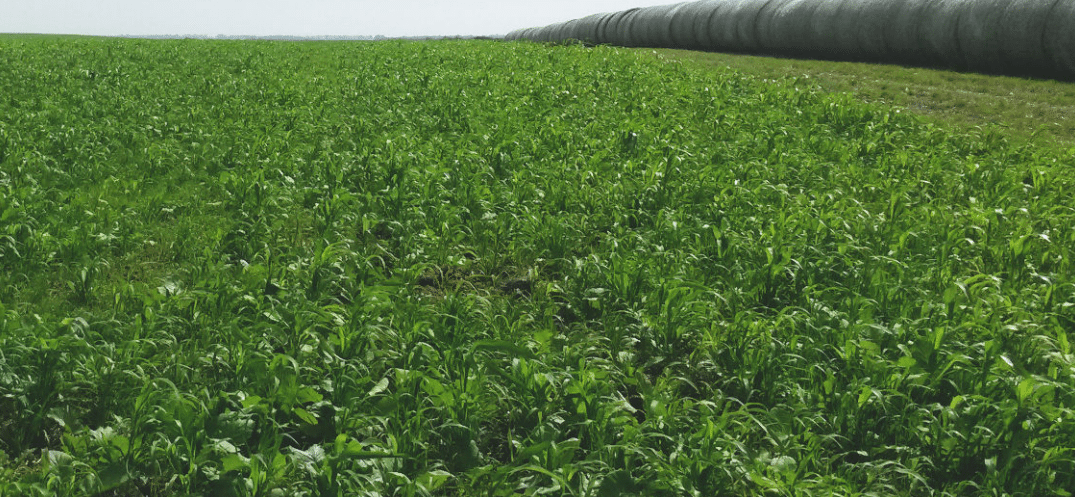
Midwest Cover Crops Council (MCCC-135)
This publication is intended to provide a starting point for farmers who are new to growing cover crops. With experience, farmers may fine-tune the use of cover crops for their systems.
The following recipe provides an introductory approach to integrating a cover crop into a wheat-based rotation with soybean or corn. Planting a cover crop blend that predominantly consists of cool-season species and is winter-killed adds diversity and provides soil armor through summer and spring. However, in some situations added ground cover in the spring in combination with excess soil moisture could be a problem unless winter cereals (winter rye, wheat, or triticale) are included in the mix.
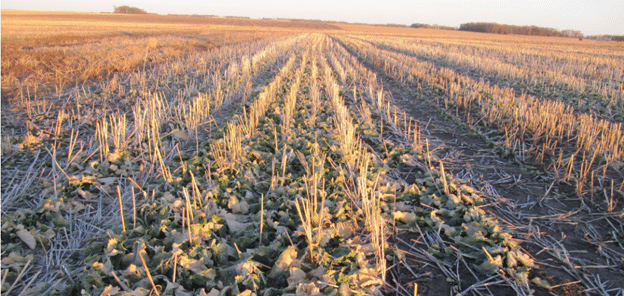
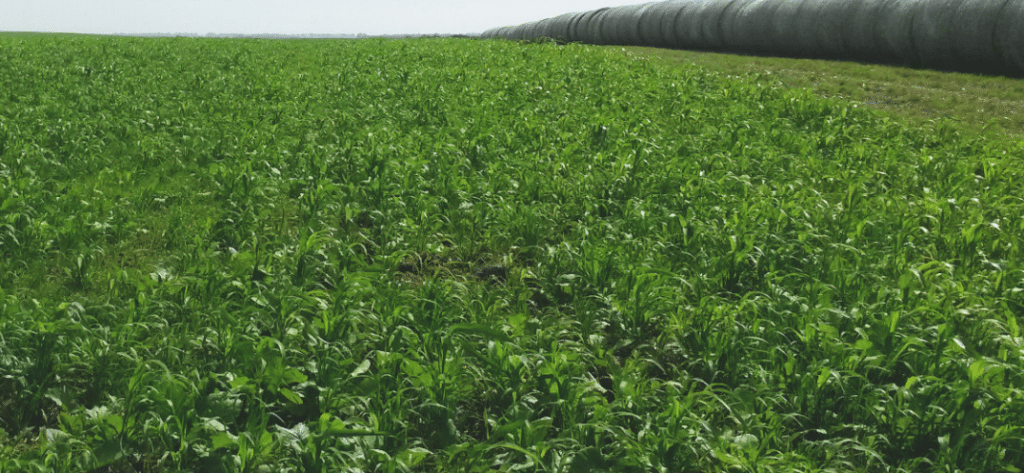
Cover Crop Selector Tool—available from the Midwest Cover Crops Council, www.midwestcovercrops.org
Cover Crop Species Selection for Grazing (USDA-NRCS publication SD-FS-56)
Herbicide Residual Effects on Cover Crops after Wheat (South Dakota State University Extension)
Cover Crop: Common Species and Properties of South Dakota (USDA-NRCS)
Grazing Cover Crop Calculation App (Jotform app)
David Karki, South Dakota State University Extension (Note: This publication was adapted with consent from MCCC under a joint project to produce customized introductory guidance about cover crops for all member states/provinces.)
Eric Barsness, USDA-NRCS; Anthony Bly, South Dakota State University Extension; Eileen Kladivko, Purdue University; Anna Morrow, Midwest Cover Crops Council
The Midwest Cover Crops Council (www.midwestcovercrops.org) aims to facilitate widespread adoption of cover crops throughout the Midwest by providing educational/outreach resources and programs, conducting new research, and communicating about cover crops to the public.
Funding for this project was provided by McKnight Foundation.
December 2022
The U.S. Department of Agriculture (USDA) prohibits discrimination in all its programs and activities on the basis of race, color, national origin, age, disability, and where applicable, sex, marital status, familial status, parental status, religion, sexual orientation, genetic information, political beliefs, reprisal, or because all or a part of an individual’s income is derived from any public assistance program. (Not all prohibited bases apply to all programs.) Persons with disabilities who require alternative means for communication of program information (Braille, large print, audiotape, etc.) should contact USDA’s TARGET Center at (202) 720-2600 (voice and TDD). To file a complaint of discrimination write to USDA, Director, Office of Civil Rights, 1400 Independence Avenue, S.W., Washington, D.C. 20250-9410 or call (800) 795-3272 (voice) or (202) 720-6382 (TDD). USDA is an equal opportunity provider and employer. ©2022 by MCCC. All rights reserved.
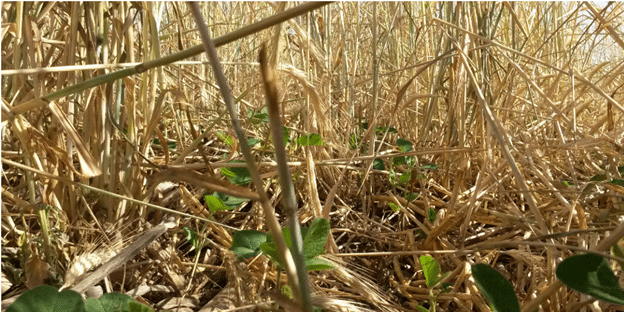
MCCC-134
This publication is intended to provide a starting point for farmers who are new to growing cover crops. With experience, farmers may fine-tune the use of cover crops for their systems.
With much attention focused on soil health and crop diversity, interest in cover crops has increased greatly in recent times. Generally, following small grains (after harvest or early season hay crop), a wide range of cover crop species can be selected due to an ample seasonal window for establishment and growth. However, for the row-crop growers who practice a strict corn-soybean rotation, the species selection is limited. Winter rye (cereal rye, Secale cereale L.) has been a go-to cover crop choice among many row-crop growers in the Midwest, including in South Dakota. Some producers have also used winter wheat and/or winter triticale as a cover crop. One of the most important attributes that winter rye possesses over other winter cereals such as winter wheat or triticale is its tolerance to extreme cold temperatures. Further, its rapid early spring growth and allelopathic characteristics, which allow it to suppress tough weeds, have also been favored by producers.


Cover Crop Selector Tool—available from the Midwest Cover Crops Council, www.midwestcovercrops.org
Thinking Cover Crops? Winter Rye Between Corn and Soybean (South Dakota State University Extension website)
Management Implications of a Rye Cover Crop on Nutrient Cycling and Soybean Production in Southeast South Dakota: Focus on Rye Seeding Rates and Termination Timing (South Dakota State University thesis)
NRCS Cover Crop Termination Guidelines: Non-Irrigated Cropland (USDA-NRCS)
David Karki, South Dakota State University Extension
(Note: This publication was adapted with consent from MCCC under a joint project to produce customized introductory guidance about cover crops for all member states/provinces.)
Eric Barsness, USDA-NRCS; Anthony Bly, South Dakota State University Extension; Eileen Kladivko, Purdue University; Anna Morrow, Midwest Cover Crops Council
The Midwest Cover Crops Council (www.midwestcovercrops.org) aims to facilitate widespread adoption of cover crops throughout the Midwest by providing educational/outreach resources and programs, conducting new research, and communicating about cover crops to the public.
Funding for this project was provided by McKnight Foundation.
December 2022
The U.S. Department of Agriculture (USDA) prohibits discrimination in all its programs and activities on the basis of race, color, national origin, age, disability, and where applicable, sex, marital status, familial status, parental status, religion, sexual orientation, genetic information, political beliefs, reprisal, or because all or a part of an individual’s income is derived from any public assistance program. (Not all prohibited bases apply to all programs.) Persons with disabilities who require alternative means for communication of program information (Braille, large print, audiotape, etc.) should contact USDA’s TARGET Center at (202) 720-2600 (voice and TDD). To file a complaint of discrimination write to USDA, Director, Office of Civil Rights, 1400 Independence Avenue, S.W., Washington, D.C. 20250-9410 or call (800) 795-3272 (voice) or (202) 720-6382 (TDD). USDA is an equal opportunity provider and employer. ©2022 by MCCC. All rights reserved.
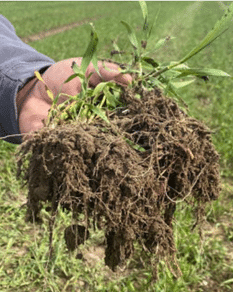
Midwest Cover Crops Council (MCCC-132)
Michigan State University Extension (CC-08)
This publication is intended to provide a starting point for farmers who are new to growing cover crops. With experience, farmers may fine-tune the use of cover crops for their systems.
This recipe provides an approach to growing a winter cereal grain cover crop after dry bean harvest in a dry bean–corn rotation as a way to introduce a cover crop. (Note: Cereal rye [Secale cereale] and annual ryegrass [Lolium multiflorum] are two different species and should not be used interchangeably.)

Cover Crop Selector Tool —available from the Midwest Cover Crops Council, www.midwestcovercrops.org
Weed Control Guide for Field Crops (Michigan State University Extension publication E0434)
Michigan Technical Note: Cover Crop Chart (Agronomy #64, March 2013)—available from the USDA–Natural Resources Conservation Service
Cover Crop Termination (Michigan State University Extension publication CC-01)
“Winter Wheat” in Managing Cover Crops Profitably (Sustainable Agriculture Network)
Christina Curell, Paul Gross, Monica Jean, and Philip Kaatz, Michigan State University Extension; and Vicki Morrone, Michigan State University (Note: This publication was adapted with consent from MCCC under a joint project to produce customized introductory guidance about cover crops for all member states/provinces.)
Scott Bales, Erin Hill, and Dennis Pennington, Michigan State University; Eileen J. Kladivko, Purdue University; Anna L. Morrow, Midwest Cover Crops Council
November 2022
The U.S. Department of Agriculture (USDA) prohibits discrimination in all its programs and activities on the basis of race, color, national origin, age, disability, and where applicable, sex, marital status, familial status, parental status, religion, sexual orientation, genetic information, political beliefs, reprisal, or because all or a part of an individual’s income is derived from any public assistance program. (Not all prohibited bases apply to all programs.) Persons with disabilities who require alternative means for communication of program information (Braille, large print, audiotape, etc.) should contact USDA’s TARGET Center at (202) 720-2600 (voice and TDD). To file a complaint of discrimination write to USDA, Director, Office of Civil Rights, 1400 Independence Avenue, S.W., Washington, D.C. 20250-9410 or call (800) 795-3272 (voice) or (202) 720-6382 (TDD). USDA is an equal opportunity provider and employer. ©2022 by MCCC. All rights reserved.
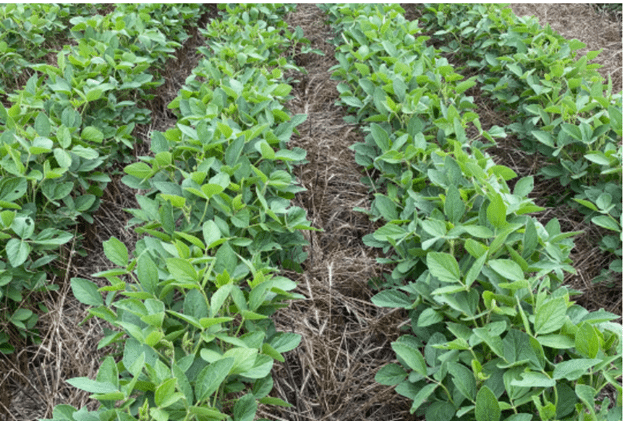
Midwest Cover Crops Council (MCCC-133)
This publication is intended to provide a starting point for farmers who are new to growing cover crops. With experience, farmers may fine-tune the use of cover crops for their systems.
Getting started with cover crops in Manitoba can be challenging due to the short growing season and variable precipitation from year to year. A good place to start with cover crops in annual grain rotations is after small grains, such as spring wheat, winter wheat, oat, barley, or cereal rye. Start small and scale up as you gain experience. Depending on the size of your operation, this could be a small plot, an area within a field, or a small field. Note that the term cereal rye and fall rye can be used interchangeably in this fact sheet. They are synonyms.

Taking time to evaluate how things went is an important step for adapting this cover crop recipe to conditions on your own farm. Did you meet your goals? What went right? What would you change next time?
Cover Crops 101 (Seine Rat Roseau Watershed District)
2020 Prairie Cover Crop Survey Report (University of Manitoba publication)
Rye: Production and Management (Manitoba Agriculture website)
Wheat Streak Mosaic (Manitoba Agriculture website)
Manitoba’s Watershed Districts (Manitoba Agriculture website)
Loeppky, Heather, G. P. Lafond, and D. B. Fowler. 1989. “Seeding Depth in Relation to Plant Development, Winter Survival, and Yield of No-Till Winter Wheat.” Agronomy Journal 81, no. 1 (January): 125–29. https://doi.org/10.2134/agronj1989.00021962 008100010023x
Yvonne Lawley, University of Manitoba; Virginia Janzen, University of Manitoba (Note: This publication was adapted with consent from MCCC under a joint project to produce customized introductory guidance about cover crops for all member states/provinces.)
Martin Entz, University of Manitoba; Dorthea Gregoire, Seine Rat Roseau Watershed District; Eileen Kladivko, Purdue University; Oscar Molina, Agriculture and Agri-Food Canada; Callum Morrison, Manitoba Agriculture; Anna Morrow, Midwest Cover Crops Council; Andres Lozano Sepulveda, Manitoba Association of Watersheds
December 2022.
The U.S. Department of Agriculture (USDA) prohibits discrimination in all its programs and activities on the basis of race, color, national origin, age, disability, and where applicable, sex, marital status, familial status, parental status, religion, sexual orientation, genetic information, political beliefs, reprisal, or because all or a part of an individual’s income is derived from any public assistance program. (Not all prohibited bases apply to all programs.) Persons with disabilities who require alternative means for communication of program information (Braille, large print, audiotape, etc.) should contact USDA’s TARGET Center at (202) 720-2600 (voice and TDD). To file a complaint of discrimination write to USDA, Director, Office of Civil Rights, 1400 Independence Avenue, S.W., Washington, D.C. 20250-9410 or call (800) 795-3272 (voice) or (202) 720-6382 (TDD). USDA is an equal opportunity provider and employer. ©2022 by MCCC. All rights reserved.
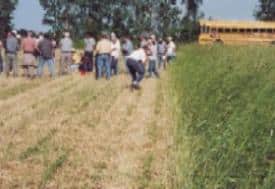
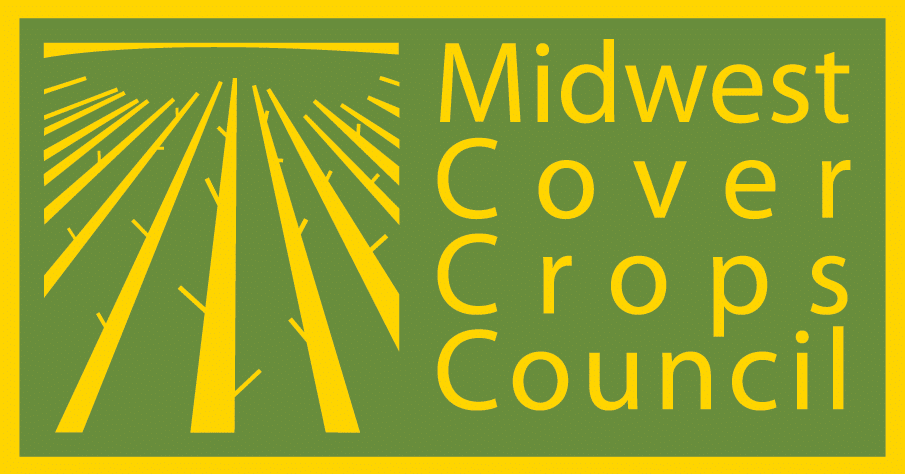
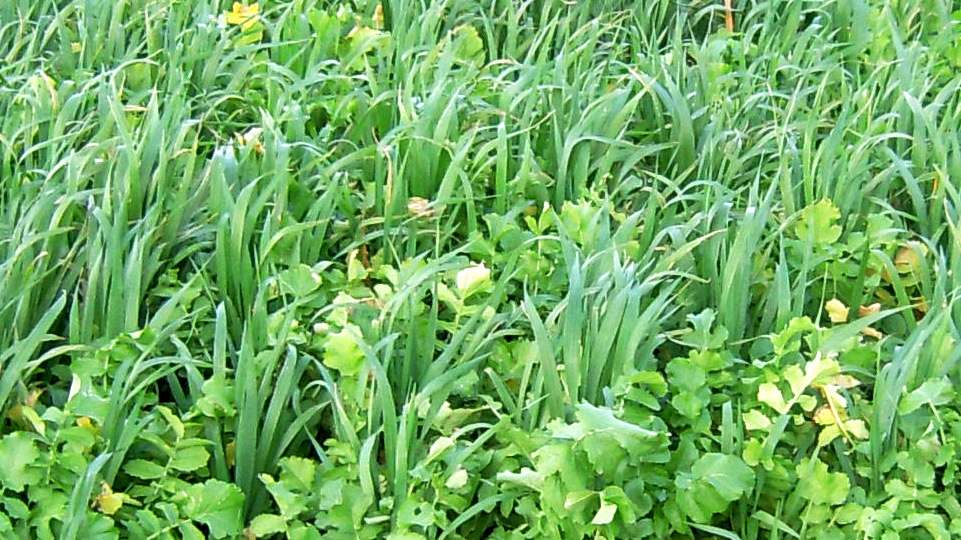
Midwest Cover Crops Council (MCCC-106)
This publication is intended to provide a starting point for farmers who are new to growing cover crops. With experience, farmers may fine-tune the use of cover crops for their systems.
Midwest Cover Crops Council (MCCC-106)
This publication is intended to provide a starting point for farmers who are new to growing cover crops. With experience, farmers may fine-tune the use of cover crops for their systems.
The following recipe provides an introductory approach to integrating a cover crop ahead of corn. Planting cover crops prior to corn requires a different set of management considerations than planting them prior to soybean.
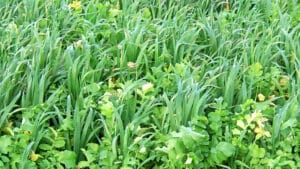
Cover Crop Selector Tool available from the Midwest Cover Crops Council
Considerations for First Time Cover Crop Adopters (Illinois Nutrient Research and Education Council publication)
Post Corn, Going to Soybean: Use Cereal Rye (Illinois Cover Crop Recipe series, MCCC-105), available from the Midwest Cover Crops Council
Managing Cover Crops: An Introduction to Integrating Cover Crops into a Corn-Soybean Rotation (Purdue Extension publication AY-353-W)
Residual Herbicides and Fall Cover Crop Establishment (Purdue Extension Weed Science publication)
Terminating Cover Crops: Successful Cover Crop Termination with Herbicides (Purdue Extension publication WS-50-W)
Conservation Cropping System for Corn-Bean No-Till (American Farmland Trust Publication)
Conservation Cropping System for Corn-Bean Till (American Farmland Trust Publication)
Jennifer Woodyard, University of Illinois Extension; Nathan Johanning, University of Illinois Extension; Shalamar Armstrong, Purdue University (Note: This publication was adapted with consent from MCCC under a joint project to produce customized introductory guidance about cover crops for all member states/provinces.)
Marisol Berti, North Dakota State University; Pete Fandel, Illinois Central College; Lowell Gentry, University of Illinois; Tom Kaspar, USDA–Agricultural Research Service (retired); Eileen Kladivko, Purdue University; Anna Morrow, Midwest Cover Crops Council; Dean Oswald, Midwest Grass and Forage; and Kris Reynolds, American Farmland Trust
Revised May 2019
The U.S. Department of Agriculture (USDA) prohibits discrimination in all its programs and activities on the basis of race, color, national origin, age, disability, and where applicable, sex, marital status, familial status, parental status, religion, sexual orientation, genetic information, political beliefs, reprisal, or because all or a part of an individual’s income is derived from any public assistance program. (Not all prohibited bases apply to all programs.) Persons with disabilities who require alternative means for communication of program information (Braille, large print, audiotape, etc.) should contact USDA’s TARGET Center at (202) 720-2600 (voice and TDD). To file a complaint of discrimination write to USDA, Director, Office of Civil Rights, 1400 Independence Avenue, S.W., Washington, D.C. 20250-9410 or call (800) 795-3272 (voice) or (202) 720-6382 (TDD). USDA is an equal opportunity provider and employer. ©2019 by MCCC. All rights reserved.